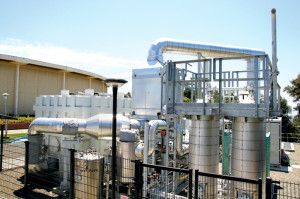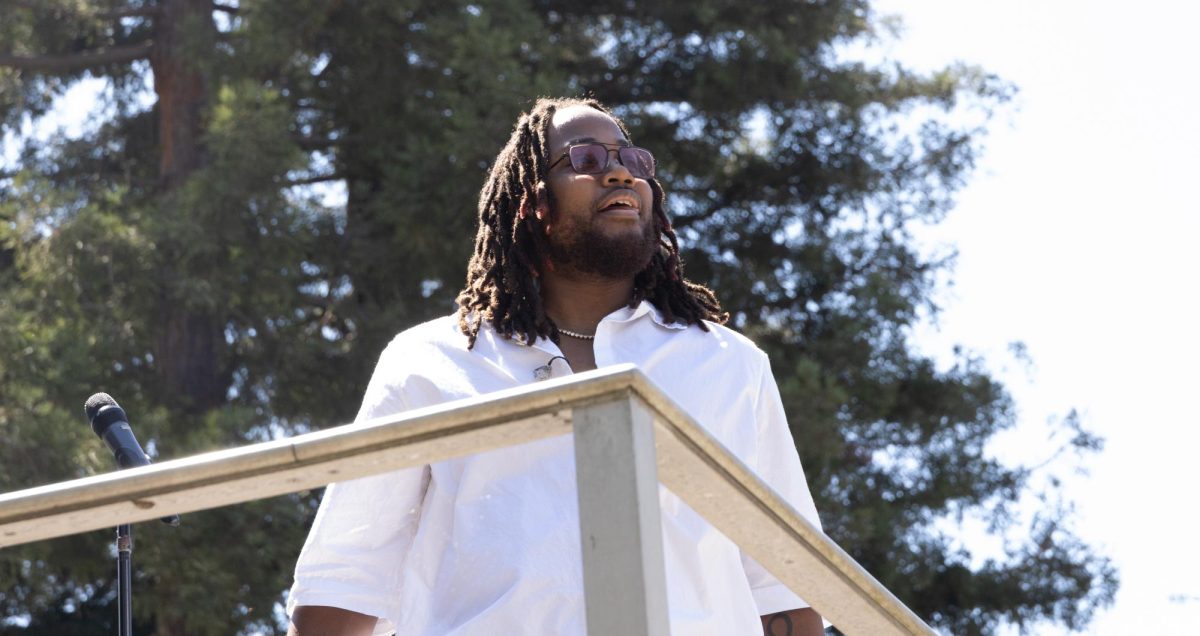
CSU East Bay students, faculty and members of the university community will soon see capital improvements both in energy efficiency and building construction on campus as early as August.
CSUEB’s master plan, which was designed in 2009 to direct future development of the Hayward campus, includes a transition to greener technologies.
CSUEB will be installing two new charging stations for electric and semi-electric vehicles in parking lots G and H by the end of August.
The charging stations, which were made possible by renewable grants, will allow up to three cars or motorcycles to charge at once. Each car or motorcycle will be able to go for 100 miles before it needs to be recharged.
Along with the new stations, CSUEB will be replacing the outdated parking lot pole units and replacing them with more energy efficient plasma lighting systems.
According to Robert Andrews, director of facilities management, facilities managers are also looking into the potential benefits of adding solar panels to campus parking lots and solar thermal heating in campus buildings, which could boost alternative energy usage at CSUEB by 5 to 10 percent.
Evelyn Munoz, energy manager for CSUEB, says the newer technological projects will help alleviate electricity demand and greenhouse gas emissions while lowering energy costs.
“While CSUEB is fully committed to saving energy, it also has to make good ‘fiscal’ sense,” said Jim Zavagno, vice president of facilities and operations at CSUEB. “The university is currently exploring additional energy efficient resources like photo voltaic [designs], solar panels and wind turbines. They will have to identify where the resources can be installed, the cost of the construction, the potential energy savings and whether the resources will be purchased or leased from other vendors.”
In the past, CSUEB has partnered with PG&E in order to build sites like the high-efficiency fuel cell, which was installed behind the music building.
The fuel cell electromagnetically converts energy into electricity to provide heat to the University Theatre, Robinson Hall, the Music Building and the water for the two swimming pools located outside the Kinesiology and Physical Education building.
“We currently have no specific plans for additional partnerships with PG&E, but we would certainly consider any opportunities to do so if it’d prove to be beneficial to the university,” said Zavagno. “Once we’ve decided on a specific energy plan or project we will solicit bids from multiple vendors. To date however, two other firms, SunPower and Chevron Energy Solutions, have done energy projects on this campus,” said Zavagno.
The facilities development and operations department is also committed to sustainability design techniques through energy conservation. Munoz — who also functions as the sustainability coordinator — focuses on areas such as waste and carbon transportation, materials, landscape, land use and site development.
CSUEB’s energy vision is for the campus to achieve a sustainable energy balance that is resilient, efficient, and leads to an overall net zero carbon foot print by the year 2030.
There are several programs that can give CSUEB the capability of counteracting carbon emissions through renewable energy and verification of renewable energy and greenhouse gas products and Native Energy, which leverages market demand for carbon offsets in order to bring on new Native American, family farmer and community-owned renewable energy projects.
Other capital improvements include new building projects like the Science Technology Engineering and Math education (STEM) building, which will be located just west of the Arts and Education building and a replacement building once Warren Hall is demolished. The replacement building will contain 113 faculty offices, a new Welcome Center and administrative support space. Another building priority is Phase IV of student housing, which is still in the planning stages as CSUEB researches market demand, costs, types of units and other factors.
“We’ve yet to receive funding to pay for the demolition of Warren Hall,” said Zavagno.
The goal for the existing CSUEB buildings is to achieve 30 percent energy savings over current consumption rates by 2030, which will require an ongoing program of retrofits and retro commissioning of approximately 80 percent of the existing buildings. The goal for new buildings will be to achieve 50 percent energy savings.
According to the master plan for the sustainability of the campus, several energy-related initiatives are already in the process of addressing the short and long-term sustainability targets for the whole CSU system. State and local-level building codes often require meeting or exceeding nationally-recognized standards and rating systems, like The American Society for Heating Refrigeration and Air Conditioning (ASHRAE), which provide updated energy guidelines and performance assessments. These measures require a collective effort from all campuses in order to achieve overall reductions in energy consumption and demand.
There are also companies like Leadership in Energy and Environmental Design (LEED) which CSUEB is considering for the designing, construction and certification of their existing buildings and future construction, in order to meet their water guidelines and performance assessments. To improve water efficiency, CSUEB has looked into xeriscaping, which is the practice of managing landscapes in dry areas with drought-tolerant plants and trees, in order to reduce the overall water consumption of the campus. It is estimated that if applied to all landscaped areas on campus excluding the sports fields, xeriscaping could reduce water consumption by 8 percent over time.
New international and state plumbing codes are also being written to ensure that efficient fixtures are meeting state requirements. For example, 1.6 gallon-flush toilets rather than the 2.5 to 3.5 gallon-flush toilets that were usually used in the past.
At CSUEB, the ongoing restroom renovation projects are required to use “ultra-efficient fixtures” which includes replacing the existing toilets with low-flow urinals at 0.5 gallon per flush and low-flow toilets at 1.28 gallon per flush, as well as 1.5 gallon per minute faucets.
When utilizing the international and state plumbing requirements, it’s estimated that 13 percent of the projected water consumption could be saved.
“Our staff really works hard every day to keep the lights on, the buildings cool, warm and clean and the landscaping looking good,” said Zavagno. “While the building and energy projects get the most attention, the fact is most of what we do is maintain, operate and clean the building and grounds,” added Zavagno.
Although some may be reluctant to spend the money to replace the inefficient equipment until it actually breaks down, the facilities and operations department at CSUEB believes energy efficient resources and products will pay for themselves in savings within a few years.











